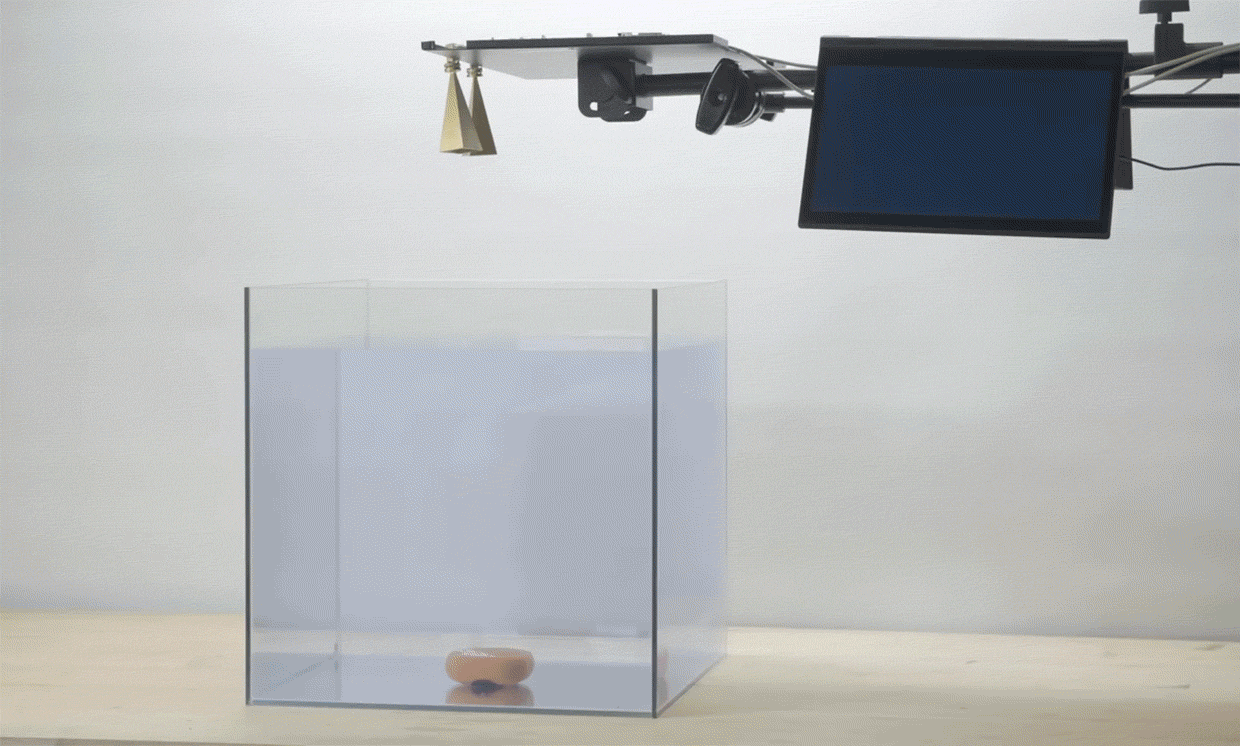Submarines and radio don’t mix. Ever since World War I, engineers have struggled to find a way for the vessels to communicate when they’re fully submerged. After all, a submarine is at its most vulnerable when it surfaces, which submarines must still do today in order to broadcast a message.
Now, a team at MIT has developed a technique for an underwater source to communicate directly with a recipient above the surface. And it could be useful for more than just submarines—underwater exploration and marine conservation could benefit as well.
The challenge that has stymied submarine communication for more than a century is that what works well in water doesn’t work so well in the air, and vice versa. “A wireless signal works well in a single medium,” says Fadel Adib, the principal investigator for MIT’s Media Lab, where the technique was developed. “Acoustic works underwater, radio frequencies in the air.”
There have been previous attempts to use just one signal to communicate directly with submerged vessels, mostly using extremely low frequencies (ELF). ELF transmissions broadcast in the 3- to 300-hertz (Hz) range. Although they travel better underwater than traditional radio frequencies, they also have wavelengths thousands of kilometers long. As such, they require kilometers-long antennas. That's not something that can be easily installed on a submarine, though ELF projects have been constructed.
Rather than trying to find one signal that can work in both mediums, the MIT team focused its attention on the boundary separating them. If sonar and radio both rule over their respective domains, why not develop a way for the signal to seamlessly transition from sonar to radio? So they developed TARF: Translational Acoustic-RF communication. The team is presenting a paper on TARF at SIGCOMM 2018.
Instead of pursuing the long, long wavelengths used by ELF systems in the past, the team went in the other direction. They were interested in millimeter waves for their ability to detect subtle changes in the water’s surface. “To our knowledge, this is very new,” says Adib. “The reason this was not possible before is that the technology for millimeter waves has only recently become available.”
Here’s how TARF works: The team placed a speaker half a meter underwater and used it to send an acoustic signal toward the surface. When the sound wave reaches the boundary between water and air, it’s reflected, but not before it nudges the boundary slightly. Above the water, a millimeter-wave radar continuously bounced a 60-gigahertz (GHz) signal off the water's surface. When the surface shifted slightly thanks to the sonar signal, the millimeter-wave radar could detect the shift, thereby completing the signal’s journey from underwater speaker to in-air receiver.
Longer radio waves traditionally associated with radar are useless here. Their wavelengths are too long and their frequencies too low to pick up the tiny perturbations caused by sound waves bouncing off the water’s surface from below. With millimeter waves, Adib says the technique can identify the speaker’s signal in water with 8-centimeter-high waves (16 cm peak-to-peak). Those may not seem high, but that’s still 100,000 times larger than the sound waves’ ripples.
With TARF, the team managed a seamless 400 bits per second communication between the speaker and the millimeter-wave radar. That’s far lower than the data rates we’re used to on dry land, but Adib says that’s about standard for sonar communications.
The technique is still in its infancy. One clear problem that must be addressed is that waves on the open ocean are often much, much higher than 8 cm. “Wind waves are much larger,” says Adib. “They can be millions or tens of millions of times larger [than the sound waves]. It’s like trying to hear someone whispering across the room while someone is screaming in your ear.”
There is a second, more fundamental limitation with TARF, however: It’s one-directional. It’s feasible for the high-frequency millimeter waves to detect the sound waves, but going the other way is impossible. Radar can’t ripple the surface of the water the way sonar does, and even if it could, sonar can’t detect those ripples in the same way radar does.
Despite its one-way nature, Adib sees numerous applications for TARF. Allowing submarines to communicate while they’re submerged is an obvious one, of course, but it’s not the only one.
“There’s a lot of interest in monitoring marine life,” says Adib. “For that, you need sensors that can measure pressure, temperature, currents.” Today, the data from those underwater sensors is typically collected by hand from divers or using autonomous underwater vehicles to ferry data from the sensors to the surface, where it broadcasts it out.
That’s hard to do continuously over the long term, says Adib. With TARF, it would be possible for a drone to regularly travel over the conservation area and seamlessly collect data from the sensors.
Adib says it would also be possible to incorporate TARF into airplane black boxes, so that they would transmit a sonar signal if they were lost at sea, which could then be picked up by search teams.
In the meantime, the Media Lab team will be improving TARF. “We’re very interested in how deep and how high you can go,” says Adib. Other interests include finding a way to provide downlink communication to a submerged receiver, how to deal with larger surface waves, and how to improve the data rates. That’s a lot of work, but Adib thinks that the fledgling technology has a lot of potential. “Even from a theoretical perspective, we don’t even know what the limits are,” he says.
Michael Koziol is the news manager at IEEE Spectrum. Previously, he was an associate editor covering telecommunications. He graduated from Seattle University with bachelor's degrees in English and Physics, and earned his master's degree in science journalism from New York University.



